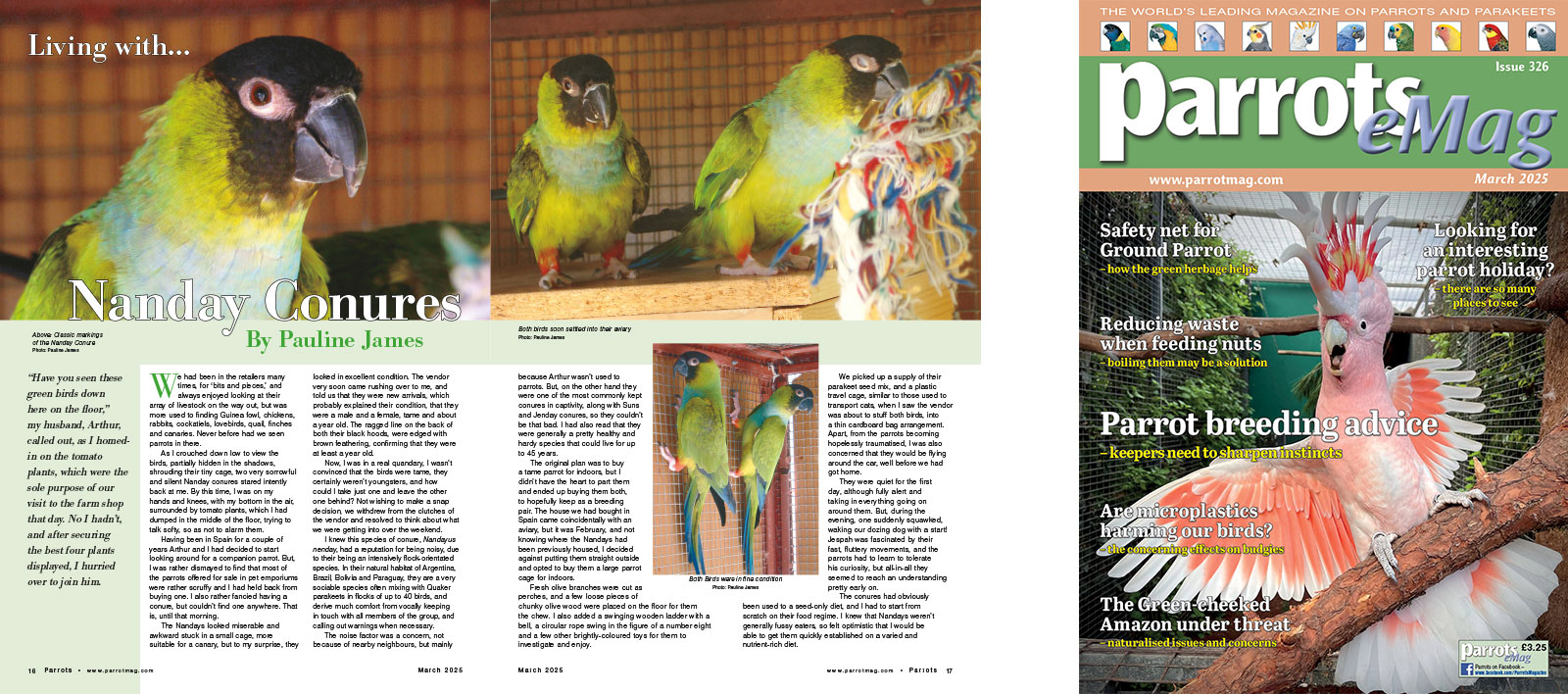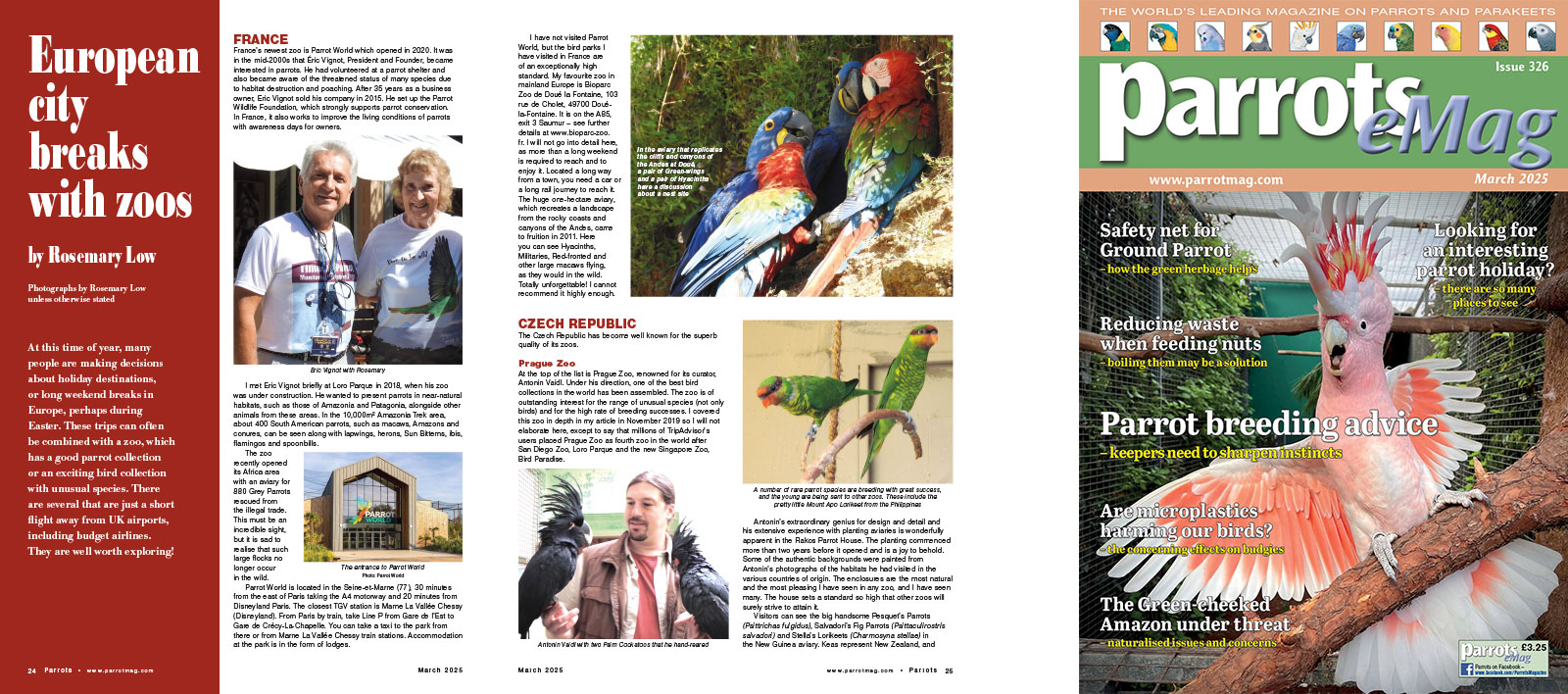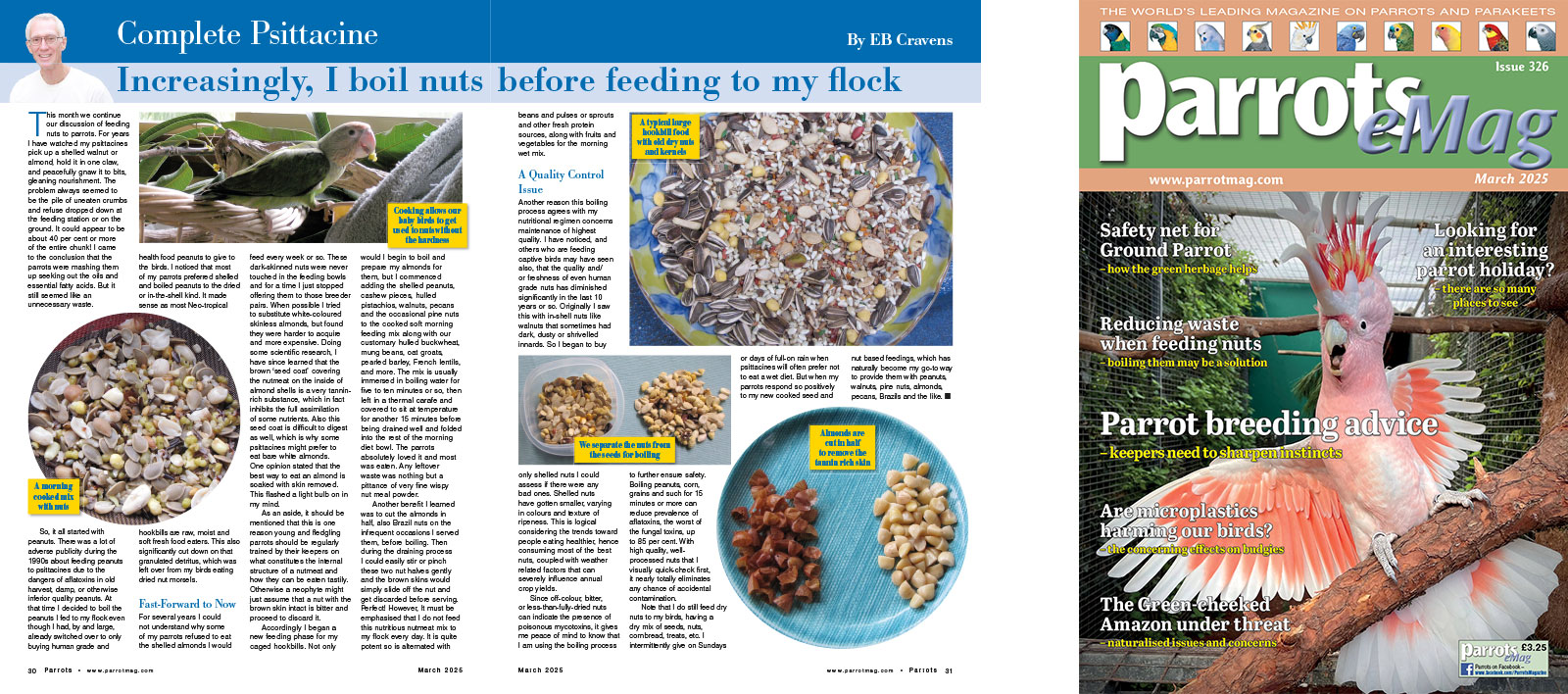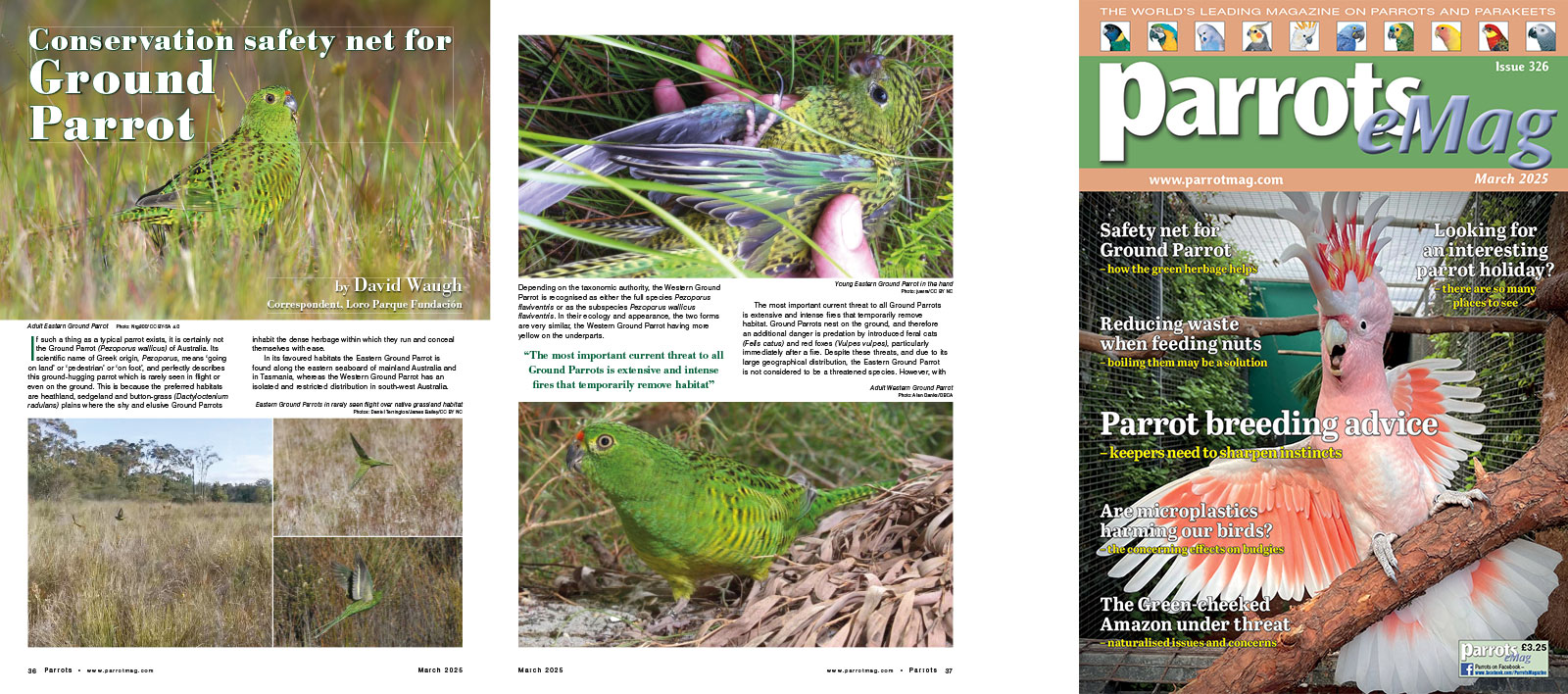
By Pauline James
“Have you seen these green birds down here on the floor,” my husband, Arthur, called out, as I homed-in on the tomato plants, which were the sole purpose of our visit to the farm shop that day. No I hadn’t, and after securing the best four plants displayed, I hurried over to join him.
We had been in the retailers many times, for ‘bits and pieces,’ and always enjoyed looking at their array of livestock on the way out, but was more used to finding Guinea fowl, chickens, rabbits, cockatiels, lovebirds, quail, finches and canaries. Never before had we seen parrots in there.
As I crouched down low to view the birds, partially hidden in the shadows, shrouding their tiny cage, two very sorrowful and silent Nanday conures stared intently back at me. By this time, I was on my hands and knees, with my bottom in the air, surrounded by tomato plants, which I had dumped in the middle of the floor, trying to talk softy, so as not to alarm them.
Get your copy now

By Rosemary Low
At this time of year, many people are making decisions about holiday destinations, or long weekend breaks in Europe, perhaps during Easter. These trips can often be combined with a zoo, which has a good parrot collection or an exciting bird collection with unusual species. There are several that are just a short flight away from UK airports, including budget airlines. They are well worth exploring!
France’s newest zoo is Parrot World which opened in 2020. It was in the mid-2000s that Éric Vignot, President and Founder, became interested in parrots. He had volunteered at a parrot shelter and also became aware of the threatened status of many species due to habitat destruction and poaching. After 35 years as a business owner, Eric Vignot sold his company in 2015. He set up the Parrot Wildlife Foundation, which strongly supports parrot conservation. In France, it also works to improve the living conditions of parrots with awareness days for owners.
I met Eric Vignot briefly at Loro Parque in 2018, when his zoo was under construction. He wanted to present parrots in near-natural habitats, such as those of Amazonia and Patagonia, alongside other animals from these areas. In the 10,000m² Amazonia Trek area, about 400 South American parrots, such as macaws, Amazons and conures, can be seen along with lapwings, herons, Sun Bitterns, ibis, flamingos and spoonbills.
Get your copy now

Complete Psittacine by Eb Cravens
This month we continue our discussion of feeding nuts to parrots. For years I have watched my psittacines pick up a shelled walnut or almond, hold it in one claw, and peacefully gnaw it to bits, gleaning nourishment. The problem always seemed to be the pile of uneaten crumbs and refuse dropped down at the feeding station or on the ground. It could appear to be about 40 per cent or more of the entire chunk! I came to the conclusion that the parrots were mashing them up seeking out the oils and essential fatty acids. But it still seemed like an unnecessary waste.
So, it all started with peanuts. There was a lot of adverse publicity during the 1990s about feeding peanuts to psittacines due to the dangers of aflatoxins in old harvest, damp, or otherwise inferior quality peanuts. At that time I decided to boil the peanuts I fed to my flock even though I had, by and large, already switched over to only buying human grade and health food peanuts to give to the birds. I noticed that most of my parrots preferred shelled and boiled peanuts to the dried or in-the-shell kind. It made sense as most Neo-tropical hookbills are raw, moist and soft fresh food eaters. This also significantly cut down on that granulated detritus, which was left over from my birds eating dried nut morsels.
For several years I could not understand why some of my parrots refused to eat the shelled almonds I would feed every week or so. These dark-skinned nuts were never touched in the feeding bowls and for a time I just stopped offering them to those breeder pairs. When possible I tried to substitute white-coloured skinless almonds, but found they were harder to acquire and more expensive. Doing some scientific research, I have since learned that the brown ‘seed coat’ covering the nutmeat on the inside of almond shells is a very tannin-rich substance, which in fact inhibits the full assimilation of some nutrients. Also this seed coat is difficult to digest as well, which is why some psittacines might prefer to eat bare white almonds. One opinion stated that the best way to eat an almond is soaked with skin removed. This flashed a light bulb on in my mind.
Get your copy now

By David Waugh, Correspondent, Loro Parque Fundación
If such a thing as a typical parrot exists, it is certainly not the Ground Parrot (Pezoporus wallicus) of Australia. Its scientific name of Greek origin, Pezoporus, means ‘going on land’ or ‘pedestrian’ or ‘on foot’, and perfectly describes this ground-hugging parrot which is rarely seen in flight or even on the ground. This is because the preferred habitats are heathland, sedgeland and button-grass (Dactyloctenium radulans) plains where the shy and elusive Ground Parrots inhabit the dense herbage within which they run and conceal themselves with ease.
In its favoured habitats the Eastern Ground Parrot is found along the eastern seaboard of mainland Australia and in Tasmania, whereas the Western Ground Parrot has an isolated and restricted distribution in south-west Australia. Depending on the taxonomic authority, the Western Ground Parrot is recognised as either the full species Pezoporus flaviventris or as the subspecies Pezoporus wallicus flaviventris. In their ecology and appearance, the two forms are very similar, the Western Ground Parrot having more yellow on the underparts.
The most important current threat to all Ground Parrots is extensive and intense fires that temporarily remove habitat. Ground Parrots nest on the ground, and therefore an additional danger is predation by introduced feral cats (Felis catus) and red foxes (Vulpes vulpes), particularly immediately after a fire. Despite these threats, and due to its large geographical distribution, the Eastern Ground Parrot is not considered to be a threatened species. However, with its much smaller distribution the Western Ground Parrot is at far greater risk and its status under Australia’s Environmental Protection and Biodiversity Conservation Act (EBPC) is ‘Critically Endangered’. Previously the population suffered from loss and degradation of the habitat, but currently its problems are also related to climate change causing increase in droughts, temperatures and heat waves, and the attendant increase in the scale, frequency, and severity of fires. Furthermore, predation by feral cats and foxes continues its pressure, and the further problem of a soil-borne water mould called cinnamon fungus (Phytophthora cinnamomic) is causing dieback of habitat.
Get your copy now




